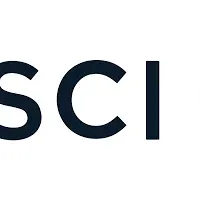
The Rise of RWAFi and Stablecoin Payments in the DeFi Revolution
The Rise of RWAFi and Stablecoin Payments in the DeFi Revolution
The decentralized finance (DeFi) sector has witnessed a remarkable shift since the summer of 2020, often referred to as the "DeFi Summer." This period marked the beginning of a new era characterized by innovative concepts and explosive growth. Recently, HTX Ventures published a report titled "A New Era for DeFi with Crypto Compliance and New Opportunities in RWA-Fi and Stablecoin Payments," detailing the evolving dynamics of crypto trading in 2025. The report highlights the significant opportunities and challenges surrounding Real-World Assets (RWAs) and stablecoin payments.
The Changing Crypto Landscape
As regulatory policies surrounding cryptocurrencies gradually ease, institutional investors are increasingly participating in the crypto ecosystem. This shift has positioned stablecoins and RWAs as critical links between traditional and decentralized finance. The usage of stablecoins in blockchain transactions has skyrocketed, from a mere 3% in 2020 to over 50% by the end of 2024. This transition underscores the strategic importance of stablecoins in facilitating cross-border payments, particularly within international trade.
The report emphasizes the enormous potential of stablecoins, noting that the global market for cross-border B2B payments, traditionally valued at around $40 trillion, along with the consumer remittance sector generating hundreds of billions annually, could significantly benefit from the efficiency that stablecoins offer. It predicts that as more users adopt stablecoins, their influence is likely to disrupt existing market segments, positioning them as major players in global payments.
In addition, the U.S. House Financial Services Committee is poised to introduce a stablecoin bill, which may be the first comprehensive regulation on cryptocurrencies to pass through Congress. This legislation could accelerate the adoption of crypto wallets, stablecoins, and blockchain payment options among various sectors, including banks, businesses, and individuals. Major financial entities like PayPal and Stripe are already exploring opportunities within the stablecoin sector.
RWAs in a Stable Market
The RWA market has seen positive momentum, even during the recent bear market, primarily due to its stable returns. Unlike the often volatile nature of cryptocurrencies, RWAs tend to maintain their value, which is essential for forming a resilient DeFi ecosystem. Market leaders such as Binance predict that the RWA market could reach an impressive $16 trillion by 2030, prompting organizations like BlackRock and Tether to investigate tokenized assets. This has also led to the development of compliance tools for RWA token issuance, such as Securitize.
Unveiling Opportunities and Overcoming Challenges
As RWAFi and stablecoins establish themselves at the heart of the evolving DeFi framework, project teams are challenged to create innovative solutions catering to these new market dynamics. Although challenges are expected, the current market transformation also presents numerous opportunities.
To realize the ambition of yield-generating stablecoins, the report outlines two prevailing market strategies:
1. Treasury-Backed Stablecoins: This approach utilizes U.S. Treasury bonds as underlying assets for stablecoins. This model brings traditional financial assets onto the blockchain via tokenization, ensuring the stability and low-risk features of treasury bonds while harnessing the liquidity and composability properties of DeFi. Notable examples include USDY by Ondo Finance and various Treasury-backed Vault products by OpenTrade.
2. Volatility-Driven Yield: This strategy takes advantage of crypto market volatility and Maximal Extractable Value (MEV) to produce low-risk yields. Ethena and its native stablecoin USDe exemplify this methodology effectively.
Another critical challenge lies in integrating DeFi applications with RWAs. The stability that RWAs bring can help mitigate risks in DeFi services. For instance, some collateralized debt position (CDP) stablecoins, like Curve's crvUSD, are increasingly using RWAs as collateral to improve their stability. Conversely, the inherent flexibility of DeFi can facilitate higher utilization rates of tokenized RWAs. A prime example of this synergy is Pendle, which boasts a current Total Value Locked (TVL) of $150 million in its newly established RWA sector.
New DeFi projects still have a wealth of untapped potential in specific niche areas, like addressing default scenarios in the RWA domain within private credit markets and leveraging public chains of RWAs to empower institutional finance. The report suggests promising future directions, including on-chain forex platforms, cross-border payment solutions, and multi-pool stablecoin aggregation systems.
Conclusion
HTX Ventures is at the forefront of exploring these transformative shifts in the DeFi landscape, integrating investment, incubation, and research to identify innovative projects. As stablecoins and RWAFi continue to evolve, their impact on the financial landscape will undoubtedly reshape how traditional finance interacts with decentralized systems, heralding a new era in the world of finance.
Topics Financial Services & Investing)










【About Using Articles】
You can freely use the title and article content by linking to the page where the article is posted.
※ Images cannot be used.
【About Links】
Links are free to use.